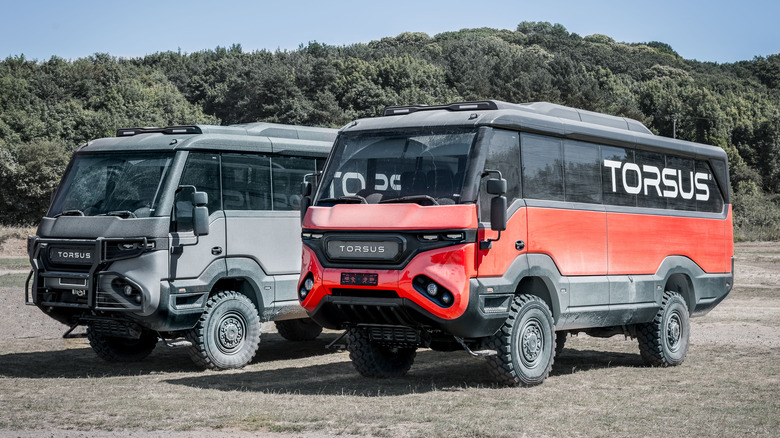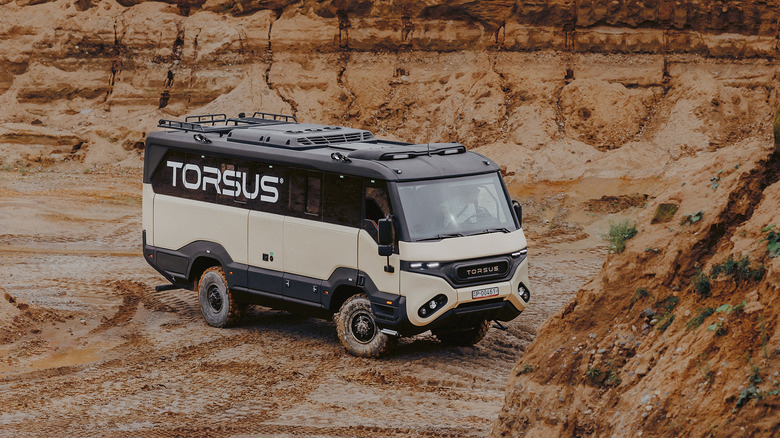This Off-Road Bus Is Awesome (But You Probably Won't See One In The US)
Hailing from the Czech Republic, the Torsus Praetorian heavy duty 4x4 off-road bus combines elements of an off-roading truck with an overlanding camper, and the ability to take plenty more people along for the adventure.
Clearly it's not meant for school trips. According to Torsus, the bus is geared towards heavy industry (like mining and oil), utility operators, construction projects, and government agencies that regularly need to transport large groups of people in areas where the roads may get a bit bumpy. It can hold 35 people in 35 really nice seats, and features a six-cylinder MAN diesel engine, producing up to 290 horsepower and 1,150 NM torque, with a 12-speed semi-automatic MAN gearbox. With a 350 mm ground clearance, rugged Michelin XZL TL off-road tires, and a fording depth of 680 mm, the Praetorian is meant to traverse both rocky roads and deep water barriers.
[Featured image by Marketing Torsus via Wikimedia Commons | Cropped and scaled | CC BY-SA 4.0]
Other Torsus vehicles, and getting one
Established in 2017, Torsus is the off-road bus brand of Pulsar Expo, a company headquartered in the Czech Republic with production facilities in Slovakia, which also partners with MAN and VW on key chassis and powertrain technology. Along with the Praetorian, Torsus appears to be taking the same rugged approach to big buses as they are to little ones, offering the 4x4 minibus Terrastorm. This one can hold 20 people, and features a biturbo diesel engine with 177 horsepower, 8-speed automatic transmission, and 250 mm ground clearance. The bus comes in various configurations, including as a camper, a mining industry bus, and even as an ambulance.
Like any bus ride, it comes with drawbacks, which in this case begins with the price. The Terrastorm ranges from the USD equivalent of $80,000 to $140,000, and the Praetorian starts at $240,000 for a basic configuration. And while the Torsus buses can traverse nearly any terrain, they haven't yet managed to make it to U.S. shores, as certification and shipping barriers are much more difficult than physical ones. But as Autoweek reports, the CEO has expressed interest in bringing them to the U.S., and is working out partnerships to make this a reality. How long this takes remains to be seen, but it's likely to make waves in the U.S. bus industry, and find riders who might be a little more excited to queue up.
[Featured image by Torsus International via Wikimedia Commons | Cropped and scaled | CC BY-SA 4.0]

